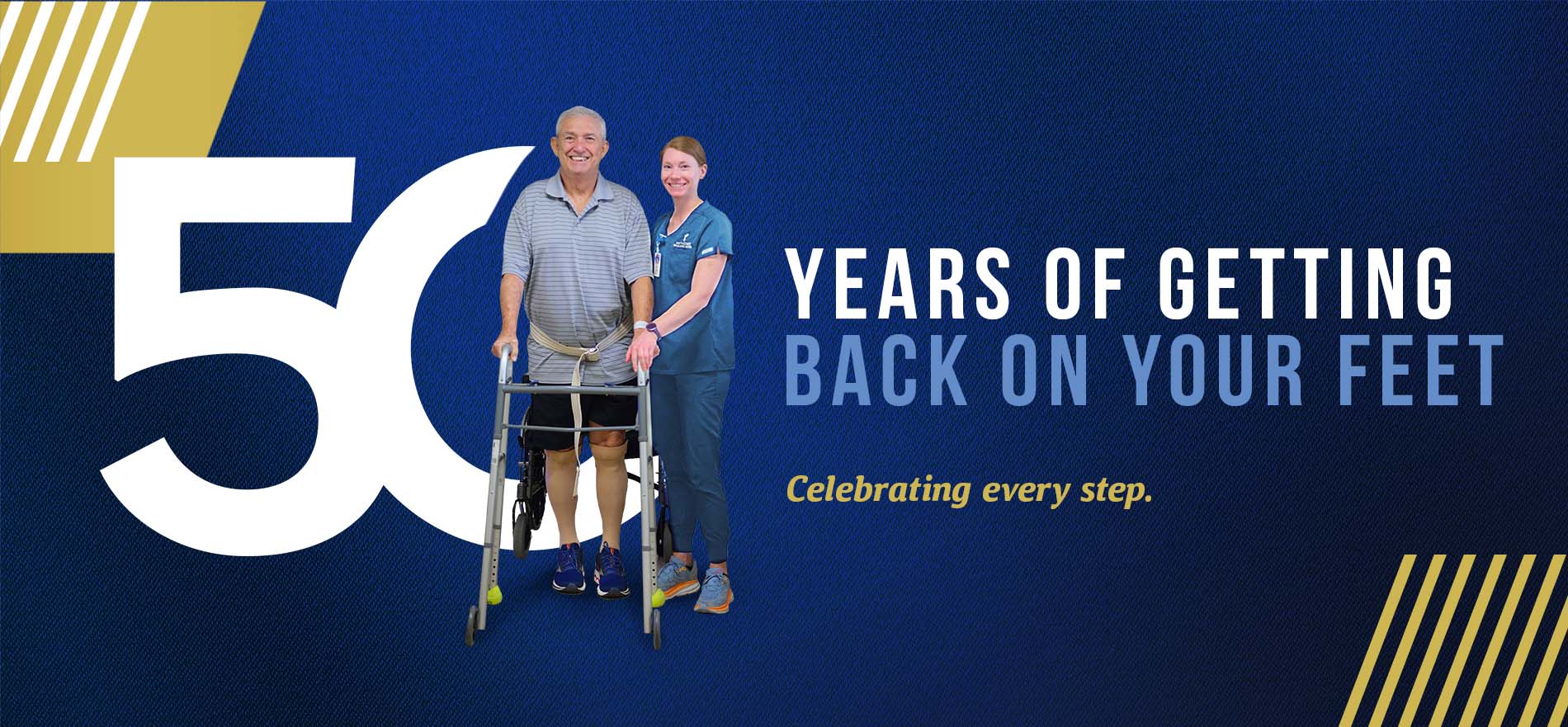
By Susan Christensen
Health and Research News Service
CANTON, Miss.—Marjorie Taylor of Canton awoke from surgery, saw her bandaged head in a mirror and thought: “My word. What happened to you?”
The 78-year-old couldn’t believe that a simple fall had left her with a life-threatening brain injury. But statistics show it’s a common fate for the elderly.
“Falls are a leading cause of traumatic brain injuries, and the risk is particularly high for senior citizens,” said Susan Geiger, a physical therapist at Methodist Rehabilitation Center’s outpatient clinic in Flowood. “In 2004, accidental falls killed 181 Mississippians, and 139 of the victims were age 65 and over.”
Taylor blacked out twice after her Jan. 5 tumble on a friend’s brick walkway. But in her confused state, she didn’t realize the seriousness of her condition. “I had no outward bleeding except my mouth,” she said.
At first, Taylor refused to go to the emergency room—she had her fill of ERs during her late husband’s extended illness. But her daughter Judy Packer insisted, a decision that probably saved Taylor’s life. “Her doctor said many people die from this because they take two Tylenol and go to bed,” said Packer, a Madison resident who teaches at French Elementary in Jackson.
As it was, Taylor got to surgery just in the nick of time. “Her doctor said the blood clot was bigger than he originally thought and she also had some bleeding in her brain,” Packer said.
Realizing her mother would need extensive rehabilitation, Packer pushed for a transfer to Methodist Rehab in Jackson. And on Jan. 16, Taylor began therapy at one of only 16 hospitals in the country designated a Traumatic Brain Injury Model System by the National Institute on Disability and Rehabilitation Research.
“We begged to come to Methodist because my dad had rehabbed here after his 1998 stroke,” Packer said. “He came in unable to even stand and walked out on a cane.”
Until her injury, Taylor walked two miles a day on her treadmill, so she doesn’t believe her fall was caused by any physical frailties. She says she simply tripped on a slightly raised brick paver and fell face-first.
To prevent such tragedies, Geiger urges homeowners to be on the lookout for fall hazards. Common dangers include uneven walkways, stairs without hand rails, slippery throw rugs, appliance cords that stretch across pathways and wobbly furniture. Geiger also recommends adding safety improvements, such as grab bars for shower stalls and brighter lighting, indoors and out.
Geiger said a number of physical conditions contribute to falls, including poor vision related to cataracts and glaucoma, gait and balance disorders and fainting caused by cardiovascular diseases. Ailments that affect the legs and feet, such as arthritis, muscle weakness and nerve damage, also play a role.
Dizziness is another concern, and can be a sign of vestibular system disorders. Geiger, who has special training in vestibular rehabilitation, says the system includes the parts of the inner ear and brain that help control balance and eye movement.
Geiger said she recommends a balance assessment for people who complain of unsteadiness. She said the screening is a good fall prevention measure because it can pinpoint problems with vision, the inner ear or inadequate input from the joints and feet. “If we can isolate the cause, we may be able to prescribe therapy that gets rid of the problem once and for all,” she said.
Taylor advises other seniors to do all they can to prevent falls because the aftermath can be life changing. Her brain injury left Taylor with a baffling communication disorder known as expressive aphasia.
Methodist speech therapist Trinity Bonner said the disorder affects Taylor’s ability to find the right word and express her thoughts. She also struggles with math, a frustrating turn of events for the retired bookkeeper. “When it’s something you’ve done all your life and you can’t do it now—it’s so confusing,” Taylor said.
Daily in-patient therapy has greatly improved Taylor’s cognitive skills. And she now looks forward to making further progress at Quest, Methodist’s community reintegration program for people with brain injuries.
Before her fall, Taylor lived a “blow-and-go” lifestyle, said her daughter. And Taylor says she’s eager to return to her self-sufficient ways. “I want to get back to where I don’t have to depend on anybody,” she said.
For more information on Methodist Rehabilitation Center’s balance assessment program, call Susan Geiger at 601-936-8888.
Fall Prevention Tips
- Remove things you can trip over (such as papers, books, clothes, and shoes) from stairs and places where you walk.
Remove small throw rugs or use double-sided tape to keep the rugs from slipping. - Keep items you use often in cabinets you can reach easily without using a step stool.
Have grab bars put in next to your toilet and in the tub or shower. - Use non-slip mats in the bathtub and on shower floors.
Improve the lighting in your home. As you get older, you need brighter lights to see well. Lamp shades or frosted bulbs can reduce glare. - Have handrails and lights put in on all staircases.
- Wear shoes that give good support and have thin non-slip soles. Avoid wearing slippers and athletic shoes with deep treads.
Source: Centers for Disease Control
